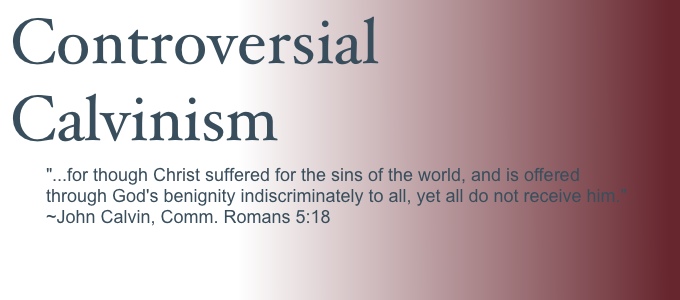I have criticized, previously and in another forum, Jerome Zanchius's treatment of Romans 8:32. I was going to brush up the criticism in order to publish it here. In researching the article, I found that Zanchius's logic is worse than my first impression told me, so I decided to make this a two-part article.
I refer to Zanchius's argument in chapter 2 (entitled "The Will of God") in his work, "Observations on the Divine Attributes." In Position 9, he says this:
As God doth not will that each individual of mankind should be saved, so neither did He will that Christ should properly and immediately die for each individual of mankind, whence it follows that, though the blood of Christ, from its own intrinsic dignity, was sufficient for the redemption of all men, yet, in consequence of His Father's appointment, He shed it intentionally, and therefore effectually and immediately, for the elect only.
This is self-evident. God, as we have before proved, wills not the salvation of every man, but He gave His Son to die for them whose salvation He willed; therefore His Son did not die for every man.
The argument (contained in the second paragraph, which is intended to prove the assertions contained in the first paragraph) is a syllogism and can be set out as follows:
All willed-for are died-for;
Some men are not willed-for,
therefore, some men are not died-for.
Here "willed-for" means "those men whom God wills the salvation of." "Died-for" means "those who God gave His Son to die for." I switched the order of Zanchius's first and second premises in order to put the major premise first. It looks strong, but it's a fallacy. We can see this if we set out the argument using Venn diagrams.
The major premise, "all willed-for are died-for," looks like this:

The part of the circle representing the willed-for that is not also part of the died-for circle is shaded out to represent that it is empty. That is, there are no willed-for who are not died-for.
To show the minor premise, "some men are not willed-for," we will put a cross in the men circle but outside the willed-for circle. The cross means that there is at least one man whom God has not willed to save. But notice that we have a couple of choices. We can put the cross either inside our outside the died-for circle. We can legitimately put the cross within the intersection of the men and died-for circles because that part of the circle has not been shaded. It would look like this:

The diagram shows a cross in the section of the diagram that represents men who are died-for, but are not willed-for. This diagram demonstrates that Zanchius's argument does not prove what he wants it to prove. In order for Zanchius's argument to be confirmed, the cross would have to be placed in the section of the men circle that lies outside the died-for circle, and this placement would have to be required by the terms of the major premise. The diagram would have to look like this:

The diagrams show the fallacy. But we can also see the fallacy by making a parallel argument using more familiar terms. Examine this precisely parallel argument:
Some brain surgeons, as we have before proved, are not geniuses, but a high IQ is possessed by all geniuses; therefore a high IQ is not possessed by every brain surgeon.
Hopefully you can see how bad this reasoning is. And Zanchius's argument is just as bad.




No comments:
Post a Comment